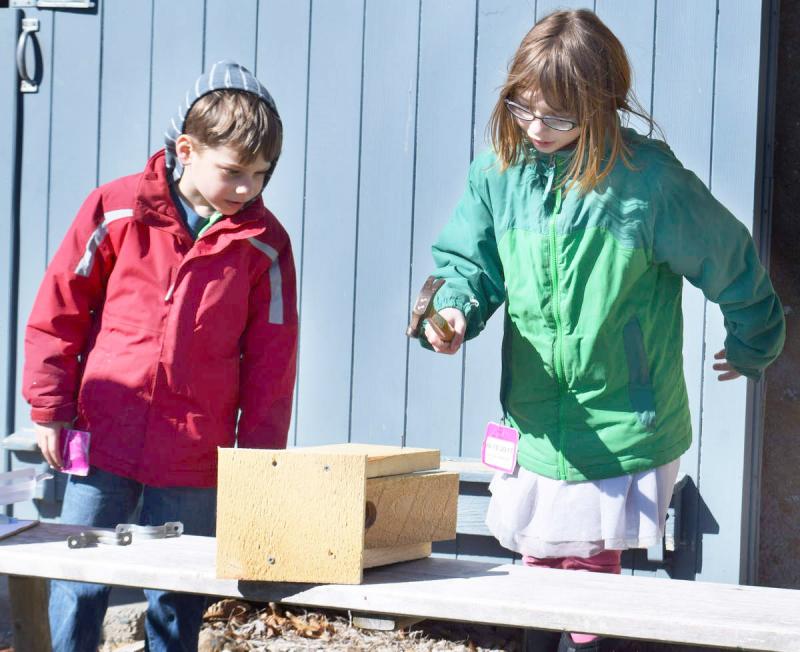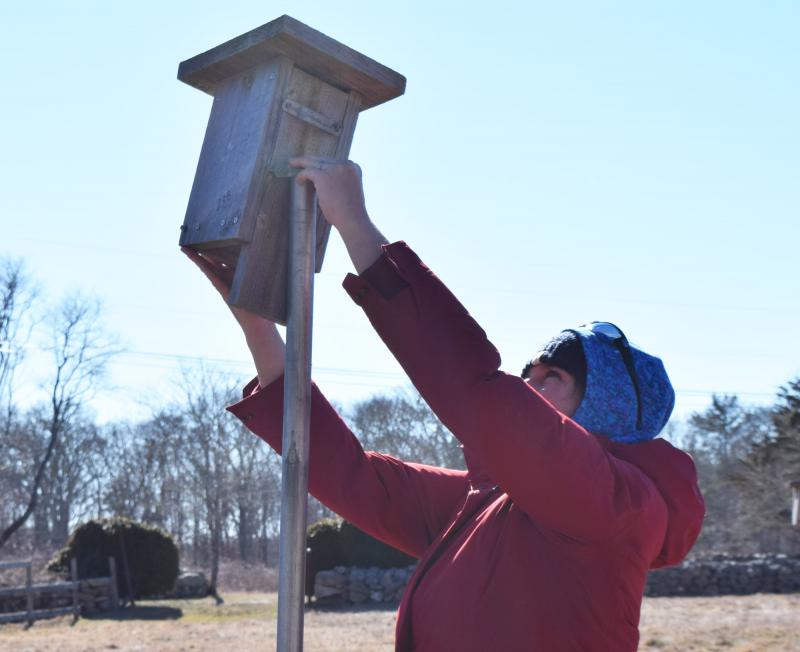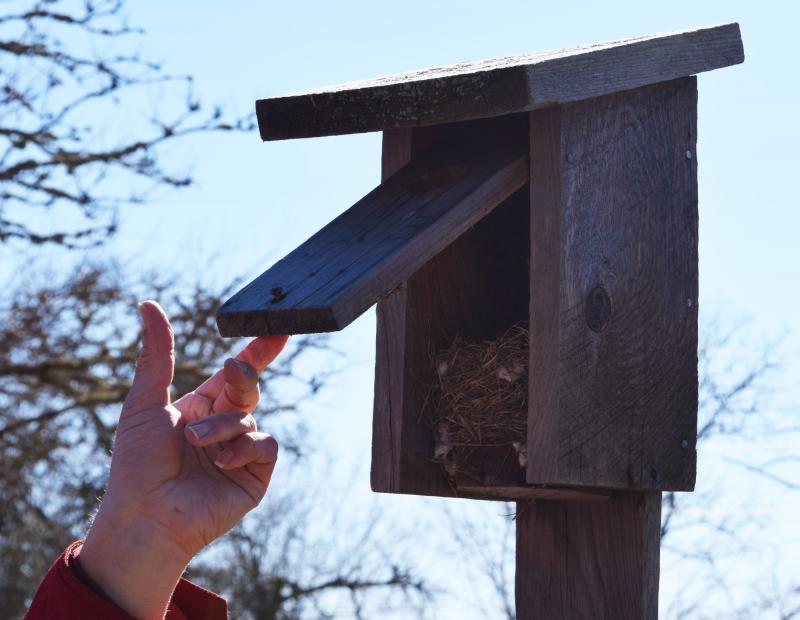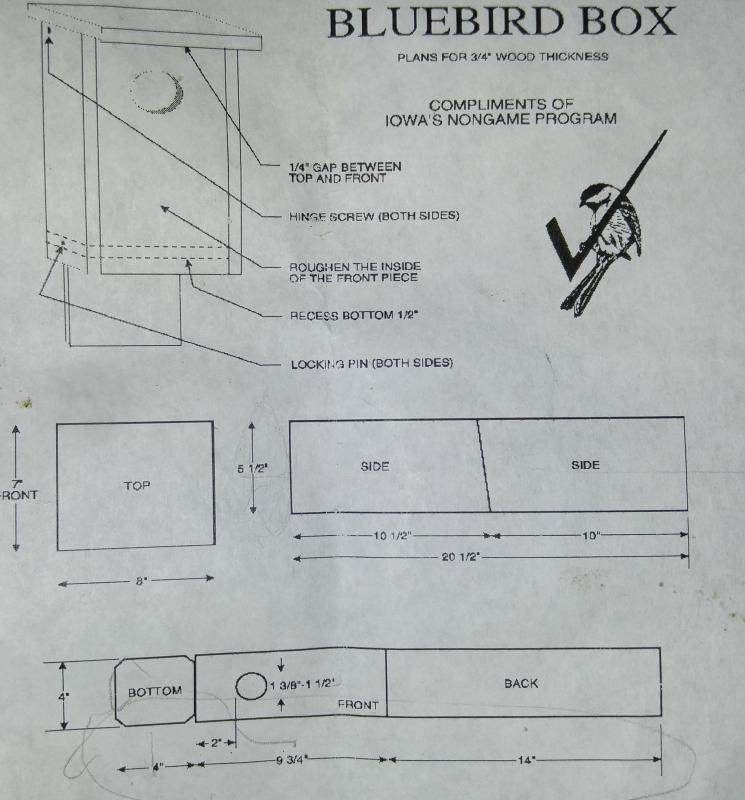4 Tips for building a bluebird box
With spring right around the corner, bluebird nesting season has officially begun, and will continue through summer. In preparation, Mass Audubon’s Lauren Miller-Donnelly guided a group of bird enthusiasts through the task of creating nesting boxes on March 5.
Interested in building your own? Here’s a few tips from the event.
1. Get the right design.
The specific design used by Mass Audubon (find a blueprint below) is favorable to eastern bluebirds because they’re cavity nesting birds, meaning they need a secure, closed environment.
The boxes the sanctuary uses are four inches by four inches by 10 inches high, with a slanted roof, a one-and-a-half-inch circular opening, and a larger door for cleaning and monitoring. The boxes around Mass Audubon’s Stone Barn, located on Horseneck Road, are built with rough cut pine that is not pressure treated.
2. Know local predators.
There are several enemies to a successful bluebird box. The most serious concern is house sparrows, which have a tendency to take up residence in these boxes. The sparrows are extremely territorial, and are known to attack and even kill neighboring birds and eggs. The risk of house sparrows can be curved by avoiding placing a bluebird box too close to a home, shed, or other human structures these birds favor.
Other concerns can include squirrels and raccoons if the boxes are placed on trees. Miller-Donnelly recommends mounting boxes on a metal pole instead. Cats can also present a threat to the birds, bu tht easy solution is to attach a bell to the cat’s collar.
3. Location, location, location.
Bluebird boxes should be kept away from residential buildings and dense forests, and hiked up several feet off the ground to avoid attracting predators, said Miller-Donnelly.
Bonus: position the box so it faces a large tree, fence, or electrical wires so that the birds have something close by to perch on, she added.
4. Check up.
During nesting season, boxes should be inspected every week. Miller-Donnelly also suggests cleaning them out at the end of the year so parasites — which will prevent future habitation — aren’t left lingering.
















